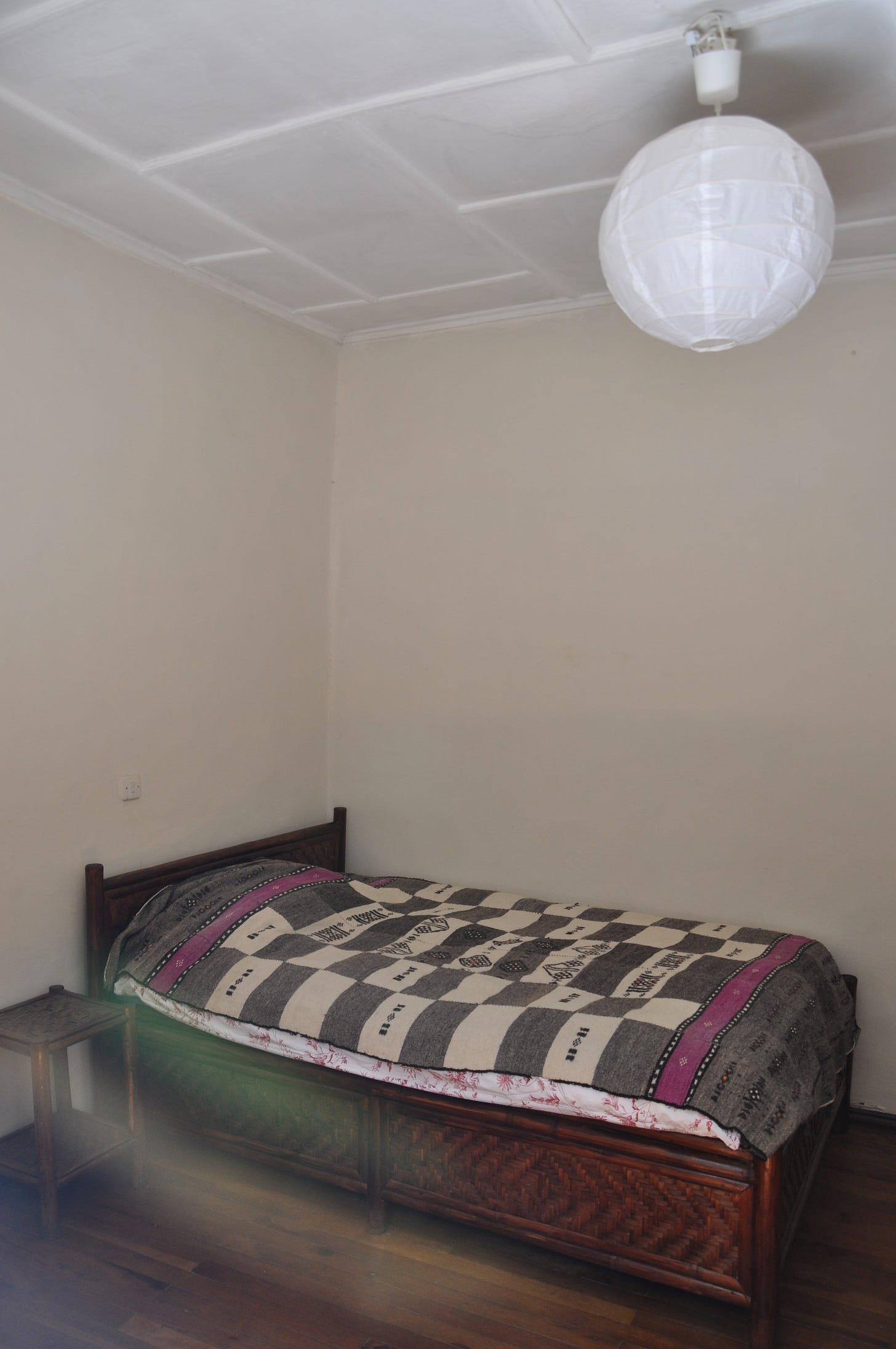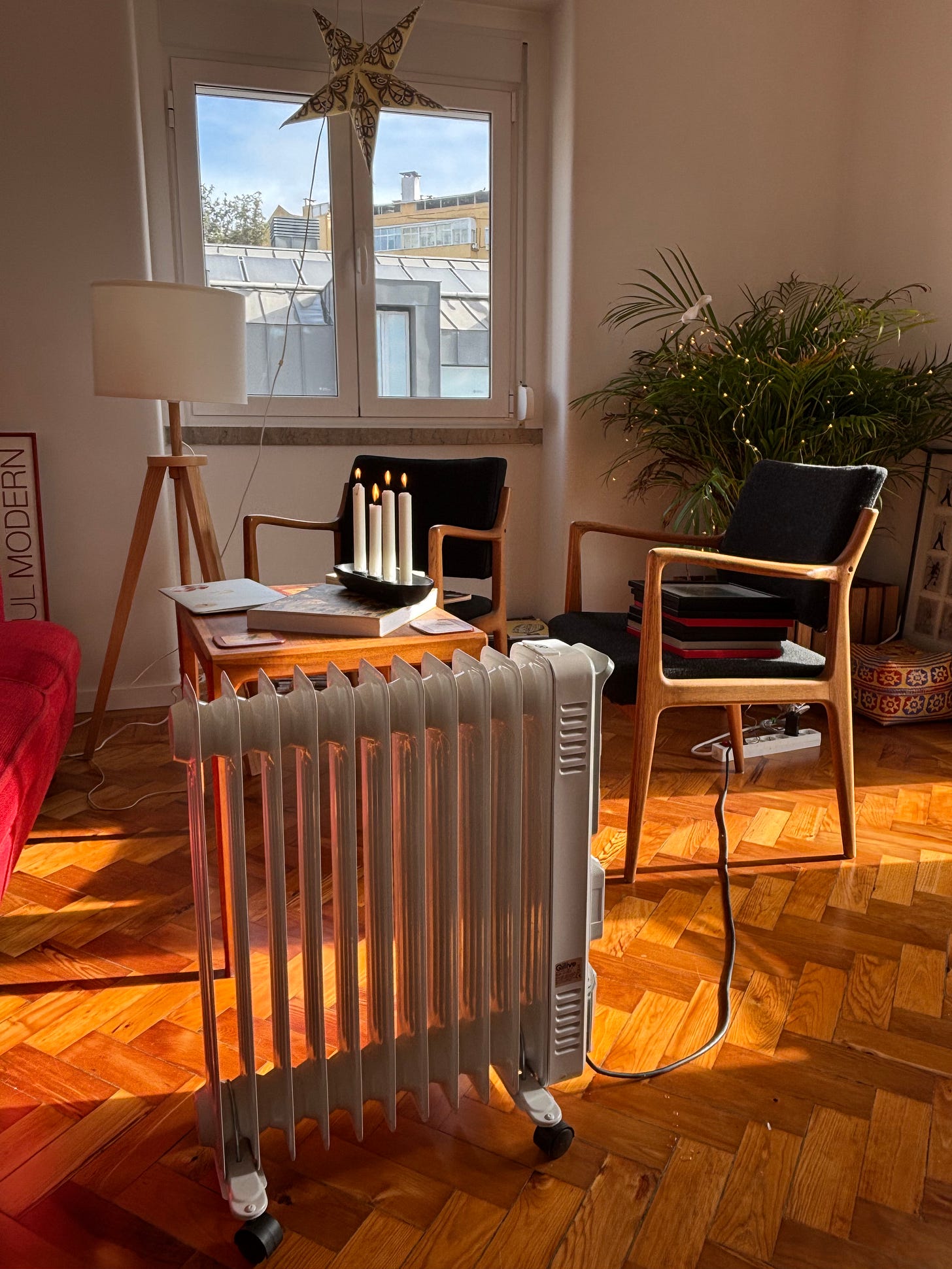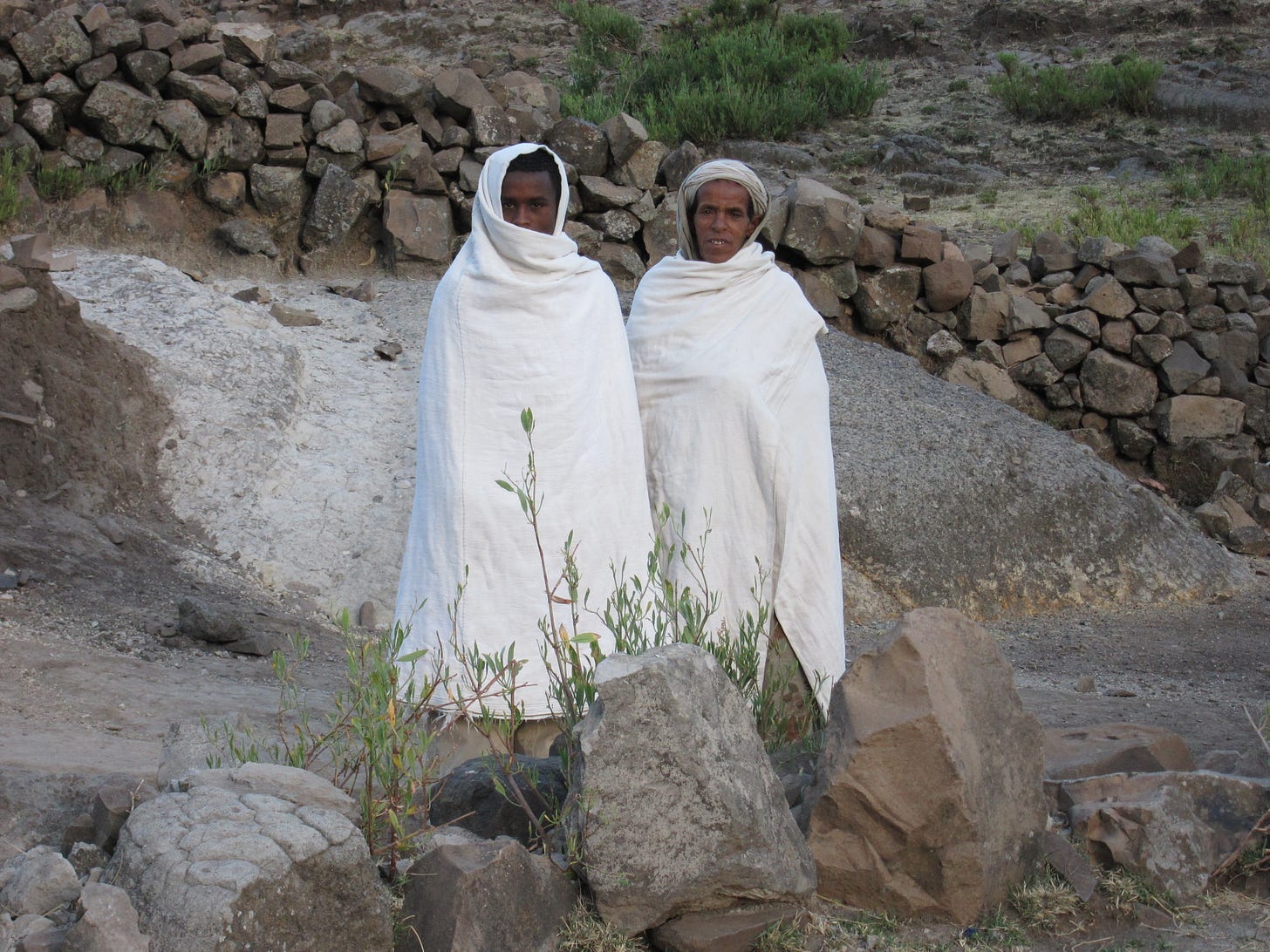The Unexpected Cold of Portugal (and Africa)
Why Warm Countries Aren’t Always as Warm as You Think
People picture Portugal as a sun-drenched paradise—golden beaches, balmy evenings, and mild winters. And they’re not entirely wrong. But step inside a Portuguese home in winter, and you might be surprised by just how cold it can get.
Likewise, people often assume Africa1 is unbearably hot all the time, as if the entire continent exists in a perpetual heatwave. But spend a winter night in Addis Ababa, Johannesburg or in the Sahel, and you’ll quickly learn otherwise.
Cold Mornings in Lisbon
The day I wrote this, in early March, I woke up in my Lisbon apartment and immediately felt the chill as I pulled my arms and head out from under the blanket. My portable oil heater was still on, but the room felt colder than usual. I checked the thermometer—only 16°C. That’s a temperature I’d expect in winter Lisbon without the heater running all night, but given that it was on all night, this seemed unusual.
Grumbling, I got out of bed and went to check the living room, where I had also left a heater on. There, it was even colder—just 15°C. I cursed out loud, then reached for a thick wool sweater to layer over the Merino wool long underwear I had slept in.
I live in a 1950s top-floor apartment, exposed on three sides. The fourth side faces the building’s inner corridor, but the insulation is poor2—like most buildings in Lisbon. Central heating is a rare luxury here, even in high-end apartments. At best, you’ll find split-unit ACs that double as heaters, and in some rare cases, underfloor heating in the bathroom. But ask a Portuguese person about heating, and they’ll tell you it’s unnecessary because winter is short—just a couple of months, they insist.
This is my third winter in Lisbon, and I can confidently say that heating is welcome for at least three to four months a year.
Yesterday, I had lunch at a friend’s house across the river in Margem Sul. I was the only true newbie; everyone else at the table was either Portuguese or had lived in Portugal for at least 25 years. When I brought up the cold and asked why people put up with it, I got the usual response: It’s not that cold. It’s only for a couple of months. People just deal with it.
Yet, there we were, wearing layers of woollen clothing, all of us a little cold—except for the occasional hot flash some of us were experiencing. We talked about how some people with financial means have installed central heating, only to abandon it after a year of sky-high energy bills. Instead, they return to the usual coping methods: layering up, using hot water bottles, and relying on electric blankets, which consume far less energy than heaters.
I’m not super rich, but I could afford to pay a bit more for electricity. The catch? My apartment’s power supply is limited to 3.5 kW at a time. That means I can only run two heaters—and not even on full blast. If I want to take a hot shower, I have to turn one off, or the power will trip.
The Warmth I Expected vs. The Cold I Found
I moved to Portugal from Sweden, where I lived for two and a half years. And I thought Portugal would be warm. And it is—but only outside, on a sunny day. Inside the house, it’s a different story.
In Sweden, every home had central heating running full blast for much of the year, and the indoor temperature never dropped below 20°C—often 21°C or even higher. In fact, I sometimes found it too warm, except for the time when the heating system in the house I was renting broke down. It was -12°C outside, and I had to move in with my boyfriend for ten days until it was fixed. But I never expected to feel this kind of cold in Portugal.
It’s not the first time I’ve been caught off guard by unexpected cold. Before moving to Sweden, I spent ten years living in Ethiopia’s capital, Addis Ababa—a place many people associate with heat, drought, and severe hunger. But in reality, Addis, sitting at an altitude of 2,355 meters, can get very cold and lush green during the rainy season—as you can see in the video below—and, like in Portugal, there is no central heating. The high elevation keeps temperatures cooler year-round, and while they can occasionally drop as low as 0°C (32°F), it’s more common for nighttime temperatures to hover around 7–10°C (45–50°F), which can feel especially brisk indoors. Now, Ethiopia is one of the poorest countries in the world, so the lack of central heating isn’t surprising. What is surprising is how few houses are built with fireplaces.
For three to four months of the year, the rainy season brings a damp, penetrating chill—much like Portugal. And, just like here, electricity is limited, so even if you have oil heaters, you can’t run them in every room without tripping the power. Instead, I kept warm the way Ethiopians have traditionally done—by wrapping myself in a gabi, a thick, double-layered cotton blanket. Traditional gabi are white, often with decorative embroidery or coloured weaving, but these days, they come in beautiful bright shades. My favourite was a red one.
I wore layers of wool, including socks knitted by my mom’s friends, slept with one—sometimes even two—hot water bottles, and when the sun came out, I’d sit outside wrapped in my gabi, trying to soak up the warmth like a little lizard. Later, when I got a better job and could afford two heaters, I still had to be strategic about heating. But I also had the option of flying somewhere warmer for a few days. I’d escape to the Indian Ocean or the lower-altitude hills of Kigali, Rwanda, to thaw out.
For a while, I hosted Airbnb guests in my spare room, many of them researchers from the U.S. and Europe visiting Ethiopia on summer travel grants. They were always shocked when I told them to bring warm clothes and sturdy waterproof shoes. Many arrived unprepared for the cold and had to learn the hard way.
Burkina Faso: Another Unexpected Chill
But Ethiopia wasn’t the only place in Africa where I’ve been cold.
I spent years in Burkina Faso, and during my first trip there, I traveled north to a town called Dori, near the border with Mali and Niger, at the end of December. I stayed in a simple guesthouse where the bed had only a thin sheet—no blanket. During the day, temperatures soared to 35°C, but at night, thanks to the desert’s proximity, they plummeted to 14°C. I remember shivering through a freezing night. The next day, I bought my first-ever Tuareg wool blanket. Since then, whenever I visit Burkina Faso in December or January, I always pack warm clothes.

Early mornings during the cold months of December and January, you’ll see people bundled up in ski jackets, woollen hats, and thick wraps. At first, I found it strange—ski jackets in West Africa? But I quickly realized these people knew exactly what they were doing. The chill in the early hours is bone-deep, and without heating indoors, layering up is the only way to stay warm.
Interestingly, the cold season also transforms the social scene. The usually vibrant nightlife, which thrives in outdoor bars and terraces, nearly disappears. It’s simply too cold for people to linger outside, and so the streets—normally buzzing after dark—become eerily quiet.
Over the years, given the need to keep warm, I’ve gathered a beautiful collection of handwoven blankets from different parts of Burkina Faso and neighboring Mali. Each one is unique, a mix of intricate patterns, woven by artisans who have perfected their craft over generations. These blankets have become more than just a way to keep warm—they hold memories of chilly Sahel mornings, bustling markets filled with beautiful textiles, and a reminder that Africa is far more complex than the stereotypes suggest.

The Myth of Perpetual Warmth
Living in Portugal has made me reflect on how misleading our assumptions about climate can be. Just as people assume Portugal is warm everywhere, all the time, they also assume Africa is unbearably hot, with no variation. But Africa is a vast continent with mountain ranges, high plateaus, and desert climates that can be brutally cold at night. The reality is far more complex than the stereotypes.
Whether it’s Lisbon’s chilly apartments, Ethiopia’s damp rainy season, or the cold desert nights in Burkina Faso, I’ve learned that warmth is never a given. And I’ve also learned that no matter where I am, I’ll always find a way to adapt—whether that means layering up, wrapping myself in a gabi, or chasing the sun to a warmer spot when I can.
While I sometimes use "Africa" even when I am not referencing every single country on the continent, I do so only when speaking about multiple countries from different regions. When discussing countries within the same region, I specify—West Africa, East Africa, etc. And if I am writing about just one country, I will name it rather than making generalizing statements. This is intentional, as I aim to respect the diversity and complexity of a continent that comprises 54 countries, thousands of ethnic groups, and an even greater number of languages.
This approach also reflects my own experience. I have lived in only two African countries and have made extended visits for work and leisure to six others. In total, I have visited just 18 of the 54 countries, and I do not claim to speak for the entire continent.
The highly informative publication
recently reported that 87% of Lisbon residents surveyed in a new study by the Centre for Social Studies at the University of Coimbra identified issues related to the quality of their accommodation, including dampness, mold, water leaks, poor thermal insulation, and insufficient heating installations.





It’s equally relevant to Andalusia. In March and April my nights in bed in Almunecar were glacial, yet it is known for its hot climate.
Brilliant. My first field trip to highlands of Kenya and Uganda and I was definitely not prepared for the cold and spent evenings sitting next to the fire.